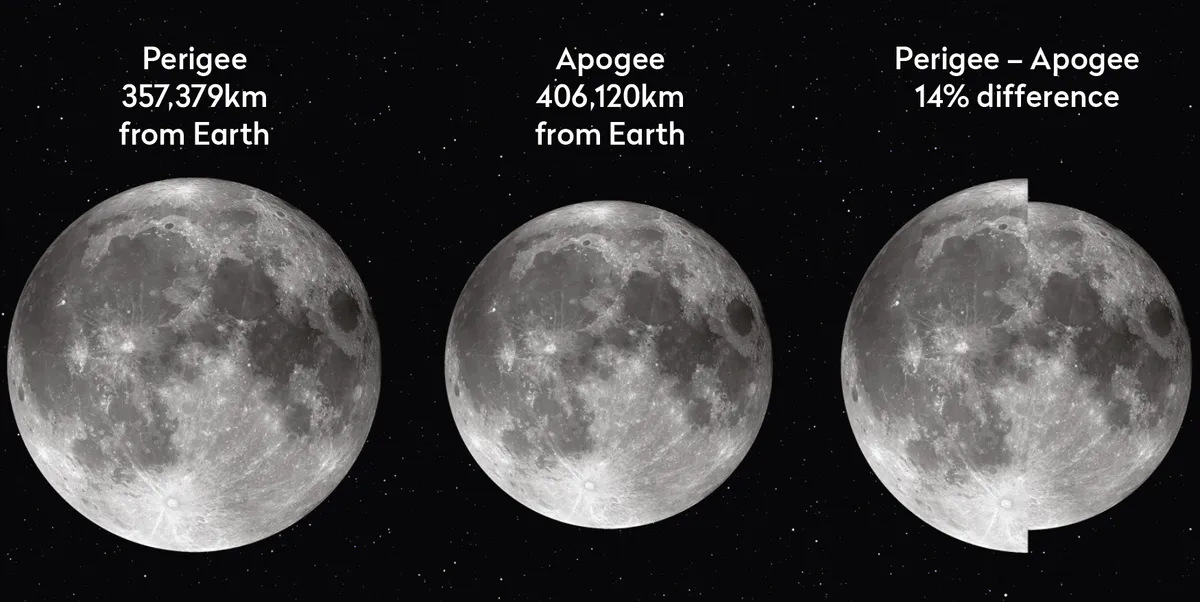You may have heard that there will be a 'supermoon' this weekend, in the early hours of Sunday morning 10 March.
While the Moon on 10 March does indeed meet the popular definition of a supermoon, it's worth ignoring the hype that will undoubtedly surround the event.
It will be in the 'new Moon' phase, and therefore not visible! You can find out more about this in our guide full Moon vs new Moon.
Astronomer Mary McIntyre articulates this brilliantly in the latest episode of our Star Diary Podcast (see below)
Much is made of so-called supermoons these days.
The fascination with big, bright full Moons is understandable, and while many bemoan the hype surrounding them, they are a great way of getting those who wouldn't normally be interested in the night sky, well, interested in the night sky!
But what is a supermoon and what makes the 10 March one different from the big, bright full Moons we see images of on social media whenever a supermoon is occurring?
10 March supermoon explained

The Moon reaches perigee at 07:07 UT on 10 March, a couple of hours prior to new Moon at 09:03 UT.
According to the ‘official’ definition, this counts as a new supermoon, although the problem is that you won’t be able to see it!
The technical name for a 'supermoon' is a perigee syzygy Moon, 'syzygy' referring to three or more celestial bodies in a gravitational system aligned in a straight line.
Perigee is the point in the Moon’s orbit when it’s closest to Earth (as opposed to 'apogee', when it's furthest from Earth).
This happens because the Moon's orbit around Earth isn't a perfect circle: it's an eccentric orbit, meaning it's an oval shape.
As a result, the Moon is sometimes closer to Earth in its orbit than at other times.
A supermoon happens when Earth, the Moon and the Sun are in a straight line, and the Moon is at its closest point.

The supermoons we see images of online occur when the Moon is at its 'full Moon' phase.
Full Moon is when the Moon is on the opposite side of the Earth relative to the Sun, so sunlight is fully illuminating the Earth-facing side of the Moon.
During new Moon, however, the Moon is between Earth and the Sun, so the Sun is illuminating the side of the Moon facing away from Earth, and we can't see it.
And this is what makes attempting to go out and see the 10 March supermoon something of a hopeless endeavour: you won't be able to see it.
Are any supermoons worth the hype?

Some may think that while the new supermoon on 10 March certainly isn't worth the inevitable hype it will garner, you could argue that even full supermoons aren't worth the hype.
There's an element of truth in that, because to the naked eye you can't really tell the difference between a 'normal' full Moon and a supermoon.
It's often implied that a supermoon is going to be an enormous spectacle, with the Moon looking colossal in the night sky.
This isn't the case, and naked-eye observers generally wouldn't notice the difference.
Without a side-by-side comparison, it's tricky to spot the difference from one full Moon to the next, but you can record changes in the Moon's size through photography.

That being said, the hype around supermoons is at the very least a good reason to encourage people to get outside and look up at the full Moon (something many of us take for granted).
And who knows? Perhaps some of those people who step outside to really study the Moon for the first time will go on to become astronomers, astrophysicists and astronauts.
Isn't the hype surrounding supermoons at least justifiable in that sense?
What is very unlikely, though, is that anyone will get inspired by the 10 March new supermoon, given it won't be visible!
Rather than attempting to see the Moon on that night, a better suggestion would be to take the time to explore the rest of the night sky, with the Moon's glare out of the way.
A new Moon is the perfect time to ignore the Moon, get out your telescope and binoculars and explore deep-sky objects like galaxies, nebulae and star clusters, or even some of those bright 2024 comets we've been hearing about.
For tips to help you, read our guide on what's in the night sky tonight.
Oh, and if you're interested, the next supermoon in 2024 that will be full (and therefore actually visible) will be on 18 September!

